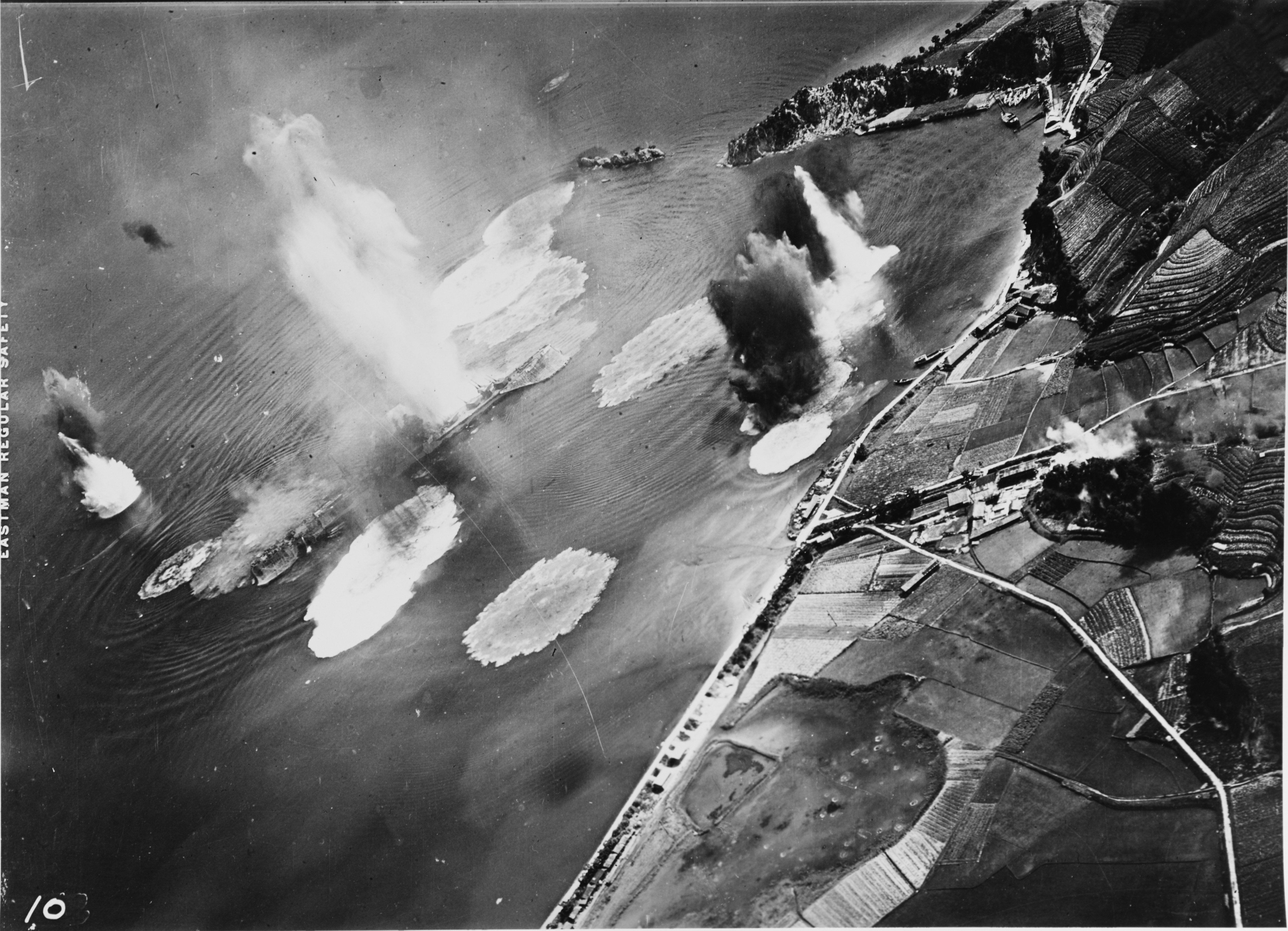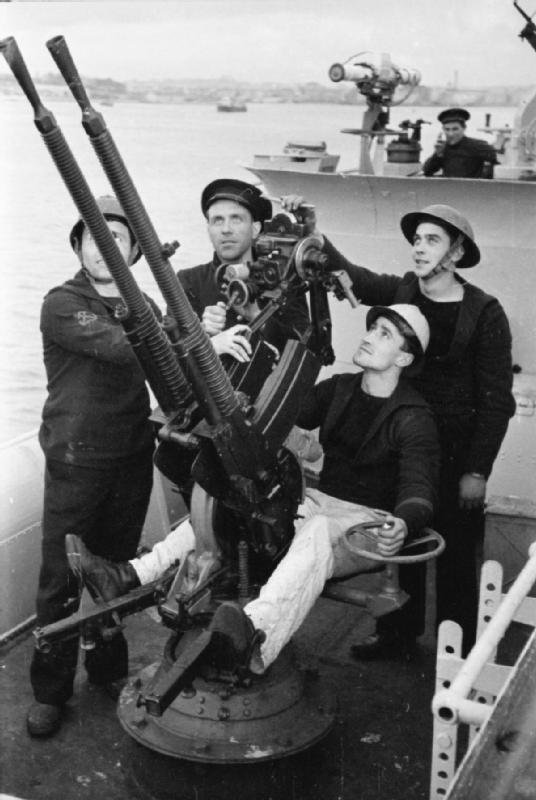|
Aoba-class Cruiser
The were a class of two heavy cruisers constructed for the Imperial Japanese Navy (IJN) which saw service during World War II. Design The of heavy cruisers (also called "A class" cruisers in the Imperial Japanese Navy) was originally planned to include and her sister ship . The two ships were laid down in early 1924 with that intent. In 1924 the IJN Naval General Staff pressured the acting head of the Basic Design Section, Kikuo Fujimoto, to use the newly designed twin "type C" gun turrets on the ''Furutaka''-class ships. Fujimoto agreed to modify ''Aoba'' and ''Kinugasa'', but it was already too late to retrofit and , which had been laid down in late 1922. The two ships were subsequently renamed as a separate class, but ''Furutaka'' and ''Kako'' were eventually upgraded with twin turrets in 1937 when all four ships received 203mm main guns. The modifications were significant. The six semi-turrets, 1 through 6, were replaced by three twin turrets, two fore and one aft ... [...More Info...] [...Related Items...] OR: [Wikipedia] [Google] [Baidu] |
Mitsubishi Heavy Industries
is a Japanese multinational engineering, electrical equipment and electronics corporation headquartered in Tokyo, Japan. MHI is one of the core companies of the Mitsubishi Group and its automobile division is the predecessor of Mitsubishi Motors. MHI's products include aerospace and automotive components, air conditioners, elevators, forklift trucks, hydraulic equipment, printing machines, missiles, tanks, power systems, ships, aircraft, railway systems, and space launch vehicles. Through its defense-related activities, it is the world's 23rd-largest defense contractor measured by 2011 defense revenues and the largest based in Japan. History In 1857, at the request of the Tokugawa Shogunate, a group of Dutch engineers were invited, including Dutch naval engineer Hendrik Hardes, and began work on the ''Nagasaki Yotetsusho'' 長崎鎔鉄所 , a modern, Western-style foundry and shipyard near the Dutch settlement of Dejima, at Nagasaki. This was renamed ''Naga ... [...More Info...] [...Related Items...] OR: [Wikipedia] [Google] [Baidu] |
Heavy Cruiser
The heavy cruiser was a type of cruiser, a naval warship designed for long range and high speed, armed generally with naval guns of roughly 203 mm (8 inches) in caliber, whose design parameters were dictated by the Washington Naval Treaty of 1922 and the London Naval Treaty of 1930. The heavy cruiser is part of a lineage of ship design from 1915 through the early 1950s, although the term "heavy cruiser" only came into formal use in 1930. The heavy cruiser's immediate precursors were the light cruiser designs of the 1900s and 1910s, rather than the armored cruisers of the years before 1905. When the armored cruiser was supplanted by the battlecruiser, an intermediate ship type between this and the light cruiser was found to be needed—one larger and more powerful than the light cruisers of a potential enemy but not as large and expensive as the battlecruiser so as to be built in sufficient numbers to protect merchant ships and serve in a number of combat theaters. Wi ... [...More Info...] [...Related Items...] OR: [Wikipedia] [Google] [Baidu] |
Bombing Of Kure (July 1945)
The attacks on Kure and the Inland Sea by United States and British naval aircraft in late July 1945 sank most of the surviving large warships of the Imperial Japanese Navy (IJN). The United States Third Fleet's attacks on Kure Naval Arsenal and nearby ports on 24, 25, and 28 July sank an aircraft carrier, three battleships, five cruisers, and several smaller warships. During the same period the British Pacific Fleet attacked other targets in the Inland Sea region and sank two escort ships and several smaller vessels as well as damaging an escort carrier. Prelude In July 1945 the IJN's remaining large warships were concentrated near the major naval base of Kure. The ships were immobilized by fuel shortages and were being used only as stationary anti-aircraft batteries. Admiral John S. McCain, Sr., the commander of the Fast Carrier Task Force, strongly opposed attacking Kure as he and his staff believed that the ships only posed a minor threat. In his memoirs Admiral Halsey ga ... [...More Info...] [...Related Items...] OR: [Wikipedia] [Google] [Baidu] |
Torpedo Tube
A torpedo tube is a cylindrical device for launching torpedoes. There are two main types of torpedo tube: underwater tubes fitted to submarines and some surface ships, and deck-mounted units (also referred to as torpedo launchers) installed aboard surface vessels. Deck-mounted torpedo launchers are usually designed for a specific type of torpedo, while submarine torpedo tubes are general-purpose launchers, and are often also capable of deploying naval mine, mines and cruise missiles. Most modern launchers are standardized on a diameter for light torpedoes (deck mounted aboard ship) or a diameter for heavy torpedoes (underwater tubes), although other sizes of torpedo tube have been used: see Torpedo#Classes and diameters, Torpedo classes and diameters. Submarine torpedo tube A submarine torpedo tube is a more complex mechanism than a torpedo tube on a surface ship, because the tube has to accomplish the function of moving the torpedo from the normal atmospheric pressure within t ... [...More Info...] [...Related Items...] OR: [Wikipedia] [Google] [Baidu] |
Hotchkiss M1929 Machine Gun
The 13.2 mm Hotchkiss machine gun model 1929, often simplified to Hotchkiss M1929 machine gun, and the like, was a heavy machine gun designed and manufactured by Hotchkiss et Cie from the late 1920s until World War II which saw service with various nations' forces, including Italy and Japan where the gun was built under license. Development In the late 1920s, Hotchkiss proposed a range of anti-aircraft automatic weapons in the 13.2, 25 and 37 mm calibers. They were all based on the same type of Gas-operated reloading, gas-operated action, similar to the one used in the 8 mm Hotchkiss Mle 1914 machine gun, which had proven extremely reliable during World War I and was still in service. This led to the production of the 13.2 mm Hotchkiss machine gun model 1929, often called the Hotchkiss M1929. Performance The Hotchkiss M1929 machine gun had a Rate of fire#Cyclic rate, cyclic rate of fire of 450 rounds per minute, but their practical sustained rate of fire wa ... [...More Info...] [...Related Items...] OR: [Wikipedia] [Google] [Baidu] |
London Naval Treaty
The London Naval Treaty, officially the Treaty for the Limitation and Reduction of Naval Armament, was an agreement between the United Kingdom, Japan, France, Italy, and the United States that was signed on 22 April 1930. Seeking to address issues not covered in the 1922 Washington Naval Treaty, which had created tonnage limits for each nation's surface warships, the new agreement regulated submarine warfare, further controlled cruisers and destroyers, and limited naval shipbuilding. Ratifications were exchanged in London on 27 October 1930, and the treaty went into effect on the same day, but it was largely ineffective. The treaty was registered in '' League of Nations Treaty Series'' on 6 February 1931. Conference The signing of the treaty remains inextricably intertwined with the ongoing negotiations, which began before the official start of the London Naval Conference of 1930, evolved throughout the progress of the official conference schedule, and continued for years ... [...More Info...] [...Related Items...] OR: [Wikipedia] [Google] [Baidu] |
Fire-control System
A fire-control system (FCS) is a number of components working together, usually a gun data computer, a director, and radar, which is designed to assist a ranged weapon system to target, track, and hit a target. It performs the same task as a human gunner firing a weapon, but attempts to do so faster and more accurately. Naval based fire control Origins The original fire-control systems were developed for ships. The early history of naval fire control was dominated by the engagement of targets within visual range (also referred to as direct fire). In fact, most naval engagements before 1800 were conducted at ranges of . Even during the American Civil War, the famous engagement between and was often conducted at less than range. Rapid technical improvements in the late 19th century greatly increased the range at which gunfire was possible. Rifled guns of much larger size firing explosive shells of lighter relative weight (compared to all-metal balls) so greatly increa ... [...More Info...] [...Related Items...] OR: [Wikipedia] [Google] [Baidu] |
Superstructure
A superstructure is an upward extension of an existing structure above a baseline. This term is applied to various kinds of physical structures such as buildings, bridges, or ships. Aboard ships and large boats On water craft, the superstructure consists of the parts of the ship or a boat, including sailboats, fishing boats, passenger ships, and submarines, that project above her main deck. This does not usually include its masts or any armament turrets. Note that in modern times, turrets do not always carry naval artillery, but they can also carry missile launchers and/or antisubmarine warfare weapons. The size of a watercraft's superstructure can have many implications in the performance of ships and boats, since these structures can alter their structural rigidity, their displacements, and/or stability. These can be detrimental to any vessel's performance if they are taken into consideration incorrectly. The height and the weight of superstructure on board a ship or a bo ... [...More Info...] [...Related Items...] OR: [Wikipedia] [Google] [Baidu] |
Gun Turret
A gun turret (or simply turret) is a mounting platform from which weapons can be fired that affords protection, visibility and ability to turn and aim. A modern gun turret is generally a rotatable weapon mount that houses the crew or mechanism of a projectile-firing weapon and at the same time lets the weapon be aimed and fired in some degree of azimuth and elevation (cone of fire). Description Rotating gun turrets protect the weapon and its crew as they rotate. When this meaning of the word "turret" started being used at the beginning of the 1860s, turrets were normally cylindrical. Barbettes were an alternative to turrets; with a barbette the protection was fixed, and the weapon and crew were on a rotating platform inside the barbette. In the 1890s, armoured hoods (also known as "gun houses") were added to barbettes; these rotated with the platform (hence the term "hooded barbette"). By the early 20th Century, these hoods were known as turrets. Modern warships have gu ... [...More Info...] [...Related Items...] OR: [Wikipedia] [Google] [Baidu] |
Sister Ship
A sister ship is a ship of the same class or of virtually identical design to another ship. Such vessels share a nearly identical hull and superstructure layout, similar size, and roughly comparable features and equipment. They often share a common naming theme, either being named after the same type of thing or person (places, constellations, heads of state) or with some kind of alliteration. Typically the ship class is named for the first ship of that class. Often, sisters become more differentiated during their service as their equipment (in the case of naval vessels, their armament) are separately altered. For instance, the U.S. warships , , , and are all sister ships, each being an . Perhaps the most famous sister ships were the White Star Line's s, consisting of , and . As with some other liners, the sisters worked as running mates. Other sister ships include the Royal Caribbean International's and . ''Half-sister'' refers to a ship of the same class but with some s ... [...More Info...] [...Related Items...] OR: [Wikipedia] [Google] [Baidu] |









